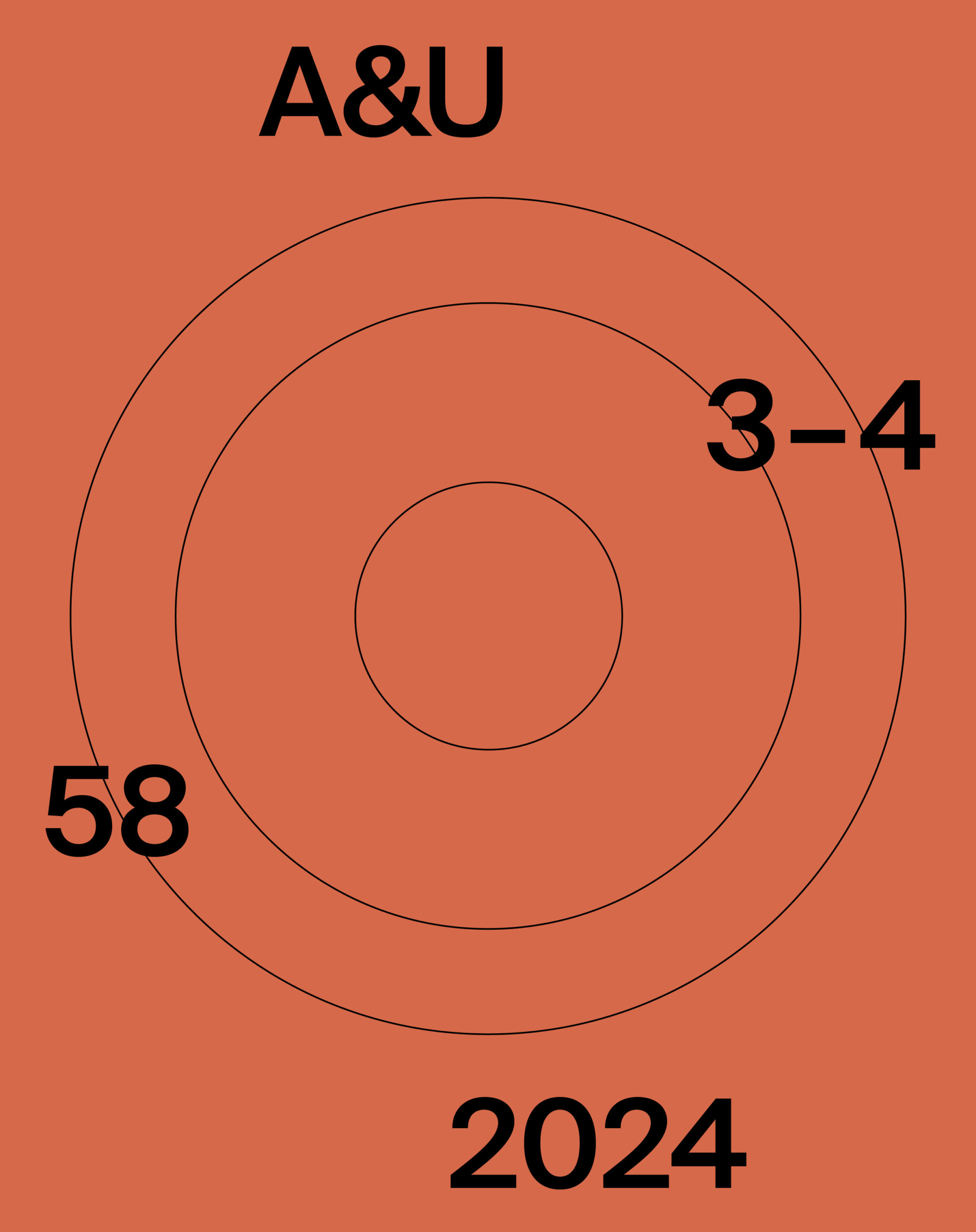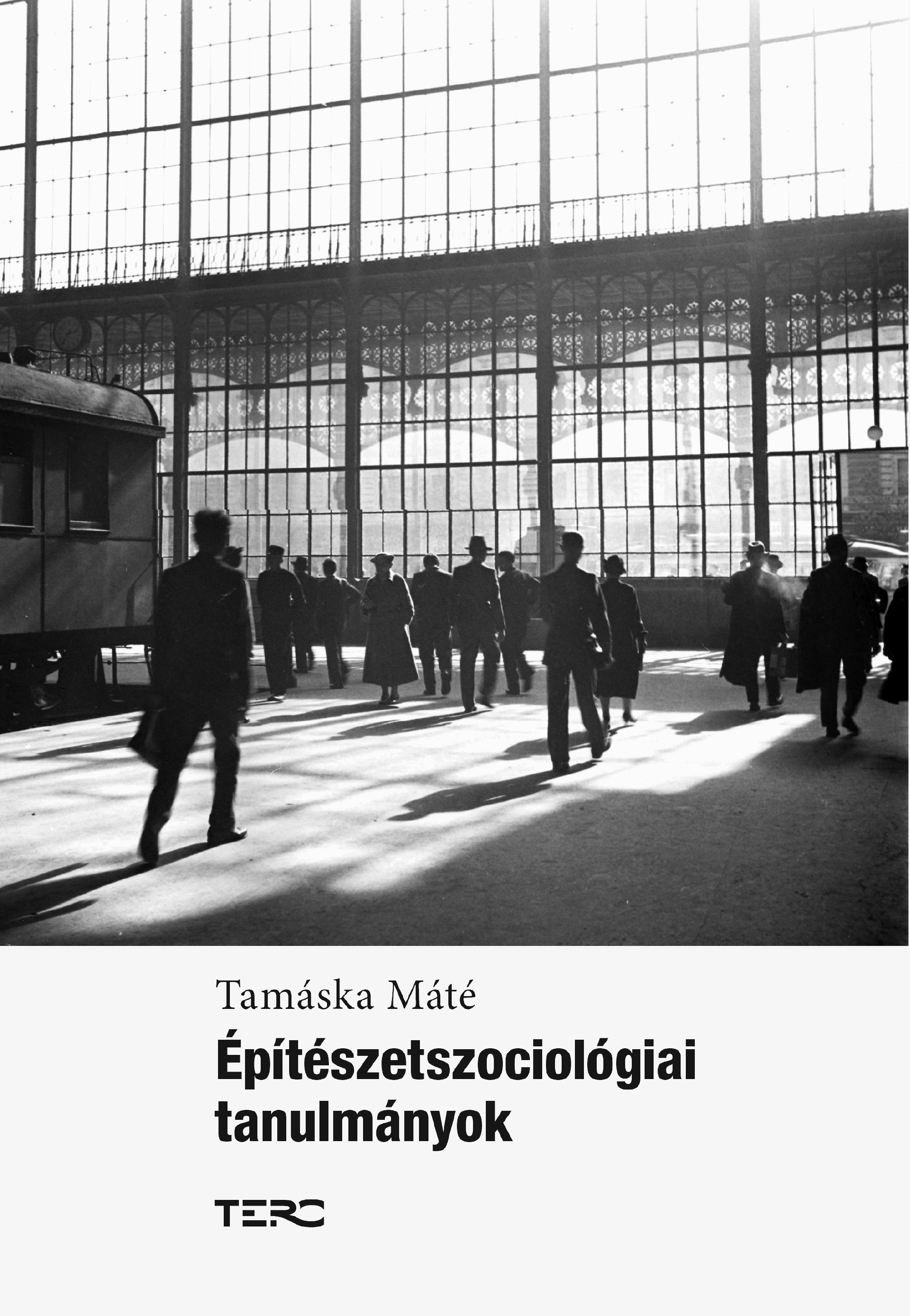As implied by its title – “Studies in Architectural Sociology” – the current publication intends to provide a textbook for an interdisciplinary field that relatively new in Hungary, or indeed elsewhere. Even the name of this discipline can be found in diverse formats in English too: Architectural Sociology,1 Sociology of Architecture,2 Architecture Sociology3. At the same time, the book also consists of a collection of the authors’ writings in this field, published between 2011 and 2022 mainly in German. Only chapter 1 has been written solely for this book in Hungarian, to introduce the formation of the new discipline in foreign academic discourses (such as German, French and English-speaking publications). Accordingly, the book fulfills double functions: to position the new discipline within the academic sphere and to demonstrate the author’s own methodological apparatus and approach by describing its theoretical framework.
Tamáska’s previous projects (originating significantly earlier than the compiled publications) are referenced throughout the book both explicitly – the book series he is editing TÉRformák – TÁRsadalomformák [Spatial Formats – Social Formats] – and implicitly, by alluding to his research and exhibition on social engineering4 and his research on settlements characterized by the inhabitants’ religious affiliation5. His extensive and thorough knowledge of the introduced discipline is also highlighted by the complexity of the book within its very compact and condensed format. The book is very short, which also prevents the reader from being alienated by the probably unknown topic.
Due to its intended function, the unusual combination of two disciplines (architecture and sociology) and the author’s meticulous research standards, all chapters are supported with rich and diverse sources. It is worth mentioning that the adapted sources, Hungarian and foreign, contemporary primary and secondary, often express contradictory views (such as in the 2nd footnote on p. 41). Such ‘technique’ on one hand shows the still-emerging character of the field, yet equally motivates further research and by the leading in the topic. This motivation is also activated by the often sketchy-like contextualization of the issues. Tamáska many times only hints or belated alludes to numerous details what might be necessary for someone new in the field not to question his argumentation (such as why the railway landscape can be seen as a common European heritage mentioned on p. 130 but explained on p. 143). Additionally, movies, maps, archive photos, plans, yearbooks, personal memoires, mass media posts, or statistical data are themselves possible sources that are or can be adapted to understand the mutual influential effects of architectures and the society living in and around them. The texts also contain sources compiled by the author (e.g. the table on p. 149) and informative black-and-white visuals, mainly the drawings and maps prepared by Evelin Hajdú and Lívia Katalin Papp in 2019.
It is also important to mention that the book does not only focus on buildings, but on spaces, places and landscapes within and outside the urban environment; as the author writes: “the scene/view … itself is the social reality” (p. 26). The most vivid realizations of this researched complexity are the constant comparative approach of settlements in every chapter and the spatial focus on mobility, not just through bridges and railway systems (in chapters 8 and 9 under the section revealingly titled “Synthesis”) but even by the book’s cover image. The historical image of the interior of a railway station shows a built environment, the effect of natural light on and in it, the people using the space, and the machinery allowing one to leave this architecture. In this way, spatial sociology and urban sociology are also activated as approaches to emphasize the introduced discipline’s indefinite character, leaving the reader also in a hesitant position to catch the core uniqueness of this new field. In addition, the black-and-white image on the front cover of the book alludes to the author’s explicitly defined approach to practicing the sociology of architecture while paying special attention to the historical contexts of the case studies. This scientific standpoint originates in and is connected to the conceptual apparatus of István Hajnal, itself explained in detail in chapter 2.
Besides the broad and complex understanding of architecture, a similarly complex range of sociological subjects can be identified in the book. It highlights how the introduced new discipline can be activated when the research is focused on one member (the architect of the German Reich School in Budapest, pp.78–81), a group (the locals of Grinzing, chapter 4), or the whole society (the use of space by inhabitants of the cities Szeged and Brno, chapter 8). However, as the author himself mentioned many times such data are often missing (like interview excerpts), could not be collected completely (asking only students and not locals regarding Wrocław’s old town) or the results alone are summarized in the chapters (regarding the wine-producing villages in chapter 7).
In terms of methodology, Tamáska clearly combines the two disciplines: by emphasizing and exemplifying sociological research methods – interviewing (chapter 4 on Grinzing) or mental mapping (chapter 3 on Wrocław) – and architectural ones – site visits (chapter 7 on wine-producing villages) and planning (chapter 8 on boulevards). Moreover, he points out that theories and methods outside these two disciplines can also be effectively integrated into the sociology of architecture. Christopher Alexander’s pattern term is originated from Noam Chomsky’s generative linguistic theory (chapter 3 and 5), while Fernand Braudel’s historical concepts of the longue durée influenced Markus Schroer’s thinking on architecture and sociology (chapter 6 and 7). Capitalism, globalization, and the notion of multilingual and multicultural Europe are also mentioned as keys to understanding the morphological or functional narration of architecture throughout the book. Similarly, network science (chapter 8, 9), monument protection (chapter 3 and 4), heritage studies (chapter 9) and tourism (chapter 7) are disciplines mentioned and adapted in the book. Despite the emphasis that Tamáska places in his introduction that the research method at the published case studies were never deductive; the site visits together with the analysis of the related sources pointed out the existing research problem (p. 8), while he equally offers examples to the contrary. The analysis in chapter 6 is based on a theoretical approach, while at chapter 5 a historical review forms the basis of the investigation.
Consisting of nine papers plus an introductory note, the book lacks a comprehensive list of literature or terms that would be useful for its textbook function. Nonetheless, each of the chapters and the book in general are well-structured and make the author’s argumentation easy to follow. The nine chapters are arranged in four sections: Theory (two chapters), Close-Ups (three chapters), Parallels (two chapters), and Synthesis (two chapters). The chapters are interconnected in numerous other ways too. For example, chapters 4 and 7 deal with settlements or districts that are connected to winemaking, while chapters 6 and 9 focus on locations that have the primary function of connecting spaces (bridges and railways). Similarly, chapters 3 and 6 can be seen as examples for understanding urban patterns by looking at their centers (the old city of Wrocław and the bridges forming the city). Further, Tamáska provides clear examples for understanding architecture and urban structures as expressing contemporary (social or state) power relations in chapter 5 and 8. Such diverse options of reading and analyzing architecture emphasize the seemingly uncountable possibilities that the new discipline offers to (re-)examine architecture and more. In this way, the book is clearly suitable for use in higher education and can be seen as a complex review about the rich research range of a leading member of the Hungarian Academy of Sciences6.
1 BEAMAN, Jean. 2002. Architectural Society. Footnotes, Magazine of the American Sociological Association, 30(9), p. 7.
2 JONES, Peter. 2011. The Sociology of Architecture: Constructing Identities. Liverpool: Liverpool University Press.
3 BRAND, Stewart. 1995. How Buildings Learn: What Happens After They’re Built. London: Penguin Books.
4 HARLOV-CSORTÁN, Melinda. 2018. Interdiszciplinaritás kiállításba csomagolva. Magyar Építőművészet, 2018, (6), pp. 85–86.
5 TAMÁSKA, Máté. 2018. A magyar reformáció településképi öröksége. Valóság, 6, pp. 32–54.
6 MTA. 2024. Örmény városépítészet Erdélyben [online]. Available at: https://real-d.mtak.hu/1556/ (Accessed: 30 November 2024).

This work is licensed under a Creative Commons Attribution 4.0 International License



